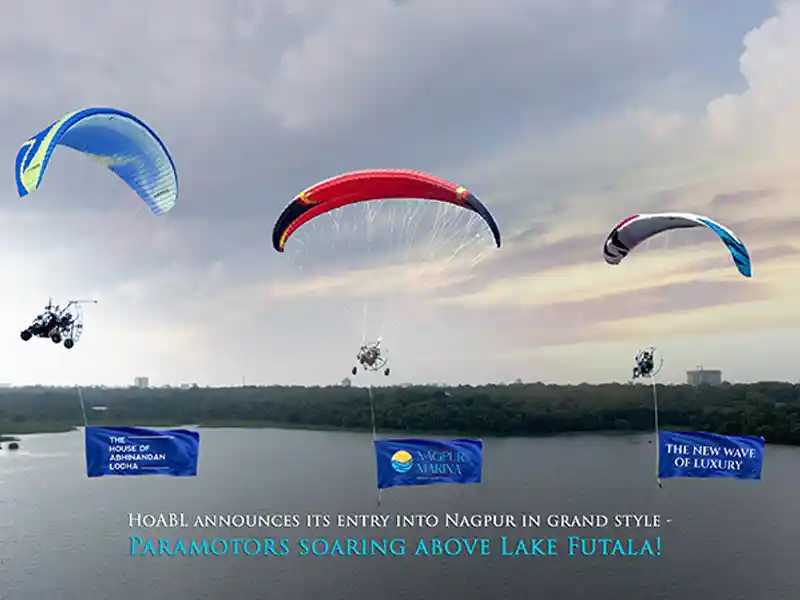With use of advanced technologies having become an integral part of urban planning and architecture, real estate developments are likewise following suit with technologies like Virtual Reality to showcase properties and reach a wider mass of prospective buyers. For instance, a key determinant of a ‘smart city’ is whether it embraces the most recent innovations to manage and enhance its advantages and assets proficiently. Urban cities need smart real estate management to succeed, thus, it is basic to create appraisal models for smart real estate to transform the vision into reality.
Virtual Reality
Technologies like Virtual Reality (VR) has changed the rudimentary cycle of purchasing and selling properties in India. While venders can list their properties on the web, purchasers can view the portfolio, access the items offered, see the space highlights, and evaluate it accordingly. Some builders are offering VR visits to prospective clients to give them a fundamental thought on what the finished structure would involve.
By using VR and AR, landowners and builders enable prospective customers to get a visual view of their properties by using a VR headset or their cell phone, without having to make arrangements to be physically present at the sites. What’s more, it can empower you to play in the global business sectors, thereby broadening and enhancing the pool of prospective clients.
Earlier, hoardings, flyers, and physical showcasing strategies, and word-of-mouth promotion, were the main ways to communicate about the availability of existing and future undertakings. Today, a wide scope of marketing strategies guide in creating and promoting a brand rather than just selling it
Today, there is a marked increase in the aspirational value of purchasing a house. Customers aren’t just looking for a house; they’re searching for places that offer good facilities and locational advantages, such as shopping malls, business centers, schools, and recreational activities in the vicinity.
The customary method of working together in India is bringing about new ideas and plan of action. Innovation and sustainability are directing this change. It is essential for real estate developers across regions to accelerate use of innovative technologies to address environmental issues and execute the right solutions. Architects must design structures that meet the current demand for sustainable features; and property management must be dexterous.
Munish Baldev
Ecological Sustainability
With the accent on ecological sustainability, the real estate sector has likewise seen fast development of green cities with solar power, and other energy and water preserving systems to bring down the carbon footprint, besides researching on sustainable construction materials and techniques. This is because there is a growing interest in sustainable and smart homes.
Urban communities offer more than 70% of world ozone depleting substances while possessing just 2% of the world’s total land. Changes in climatic conditions, rising ocean levels, and worldwide modernization, call for even more eco-friendly structures.
Technology & Sustainability Affecting Asset Valuation
Real Estate is fundamental to urban development which consumes physical assets and is critical to increasing carbon footprints. It is also fundamental to the objective of making a naturally economical future. It is now evident that the real estate sector is responsible for over 20% of the world’s carbon emissions and other adverse ecological effects, including waste creation, contamination, utilization of water and other natural resources.
Many industries are striving to maintain a social, economic, and ecological balance. But what makes real estate distinctive is the way how today’s customers as well as investors factor in technology and sustainability into asset valuation.
Traditionally, innovation and sustainability appear to be fundamentally unrelated. One is driven by elements such as Internet of Things, Artificial Intelligence (AI), and mechanical learning designed to increase manufacture and related efficiencies, the other is driven by climatic and environmental exploitation which require a new methodology for asset protection and ecological administration with improved measures to de-carbonize the environment.
Yet, technological innovations and ecological sustainability exist mutually. Without the power of technology, it is difficult for organizations to lower their carbon footprints and the pollution that they create. What we need now is for organizations to build their business strategies around digital prowess and sustainable practices and thereby build their brand value in the eyes of their customers and stakeholders.
Challenges
Given the enormous amount of energy utilization and ozone depleting substance outflow in the real estate sector, sustainable practices assume a key function in the battle against environmental change. But from a developer’s point of view, becoming environment friendly has its challenges. As the sector is very capital-intensive with a long-life target, and involves financial experts and engineers, the developer must harmonize current expenses with the property’s future worth, and plan such that the buyers’ interests are secured, and the environment is not adversely affected.
Within the real estate sector there are sub-segments which are at various degrees of development in addressing their ecological and social impact. From buying and designing to planning to demolition, there is an absence of methodology in making and managing structures. This is diminishing the overall viability of the sector’s sustainability.
However, adoption of technology in the real estate sector of India is making new headways. Technology has brought gains for both the buyer and the seller, while enhancing new constructions and property purchasing processes, with significant disruptions in the land and property buying and selling space.
From making client encounters a lot more amicable, speedy, paperless, and convenient, the real estate sector has edged forward. Innovation has enhanced development, raised the quality, and diminished the time taken to assemble the system. What once took months and years to construct, can now be accomplished within a few weeks, without negatively affecting the project’s cost and amount of work.
In conclusion: The Indian real estate sector can no longer remain isolated from adopting cutting-edge technologies.
















